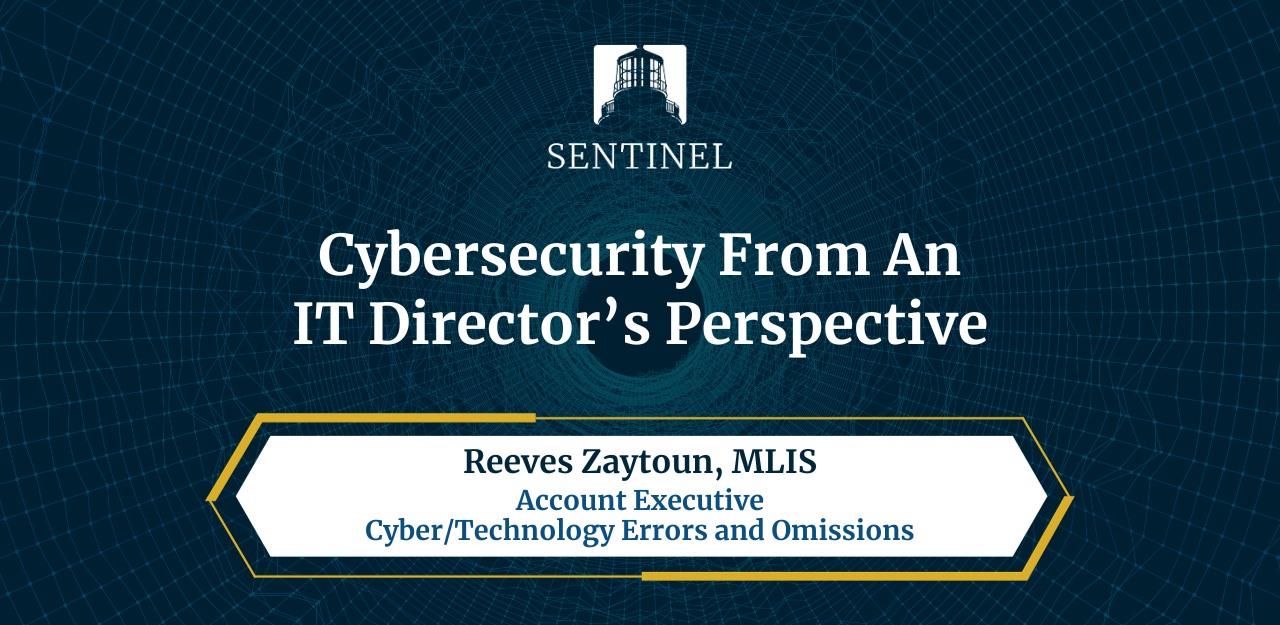Cybersecurity: Perspective of an IT Director
As we reach the end of Cybersecurity Awareness Month, we sought out the feedback of someone who is engrained in this world every day……an IT Director. In an increasingly digital world, organizations of all sizes are presented with ever changing challenges and risks. To better understand the landscape and how a business might protect itself, see the valuable insight provided below.
How would you assess the cybersecurity landscape today? Is it becoming more or less difficult for businesses to navigate the associated risks?
Over the last several years, especially with the push towards remote work, cybersecurity has become increasingly top of mind. It is now a normal part of conversations amongst businesses. As such, in some ways, the landscape has become easier for organizations to navigate because there are more vendors with expertise to partner with to create a stable security posture. However, the fluidity of the arena, increased focus on IT departments, and necessity of getting and keeping certifications, have all made the job of an IT director more intensive.
In your opinion, how important is it for an organization to have a cybersecurity strategy?
It is extremely important. If you use technology in any way to run your business, you will have cyber exposures by default. Therefore, you should place the requisite level of focus and importance on securing your organization.
What would you consider to be the key elements of such a strategy?
First and foremost, all businesses should be cognizant of the evolution of cybersecurity; it is something that changes month-to-month and year-to-year. With respect to key elements of a strategy; network security, admin controls, physical device security, password protection and hygiene, and internal communications and training are all core pillars that require attention.
How do you go about promoting cybersecurity awareness amongst your colleagues?
As an IT Director, you need to have regular touch points with your colleagues. It is important that EVERYONE understands they have an active, daily role in the organization’s cybersecurity posture.
Are there any best practices you might suggest small to medium sized business pay specific attention to when it comes to their cybersecurity posture and preparedness?
Take advantage of what you already have. For example, your organization may use Windows operating systems; ensure they are kept up to date. Additionally, many websites offer Multi-Factor Authentication (MFA); make sure to turn it on. It is important to ascertain what is already available, and THEN see what needs to be added.
Safeguarding Your Success
Sentinel is your partner for Cybersecurity with a dedicated team of cyber specialists available. Not only will we help you identify security risks, understand coverage, and educate your employees; but we will also provide you access to a wealth of Information Technology security resources and vendors to strengthen your overall cyber position. Furthermore, in the event of a breach, our team of claims professionals will stand with you until the cyber incident is resolved.
No organization is immune to cyberattacks and no budgeted dollar amount is large enough to ever insulate a company fully from experiencing unauthorized access, ransomware, or social engineering threats. Integrating risk mitigation techniques with an internal playbook and practicing incident response scenarios will put any organization in the best possible position for dealing with a security incident when the time occurs. Contact us today to learn more!


